Although Hampi, which is located in the federal state of Karnataka, was first mentioned already in the Indian epic Ramayana, for the present-day archaeological remains in Hampi it is important that in 1336 Prince Harihararaya from the Telugu nation founded here the city of the Vijayanagara or the City of Victory. This city was the capital of the Hindu rulers of three generations who ruled for more than 200 years and the empire that developed around this central city turned into one of the greatest in the history of India. The culmination of the empire and of the city was reached under two emperors who ruled from 1510-1529-1542. The end came rather abruptly, in 1565, when the empire was conquered and the city was razed to the ground.
Everything that my friend Sneža and I visited on this occasion, and we visited the most important spots, was exceptional, but even the numerous other temples and structures we did not visit (they are not in the guidebooks, etc.), but we passed by them, seemed amazing from the auto rickshaw. The site spreads in the area that is located south of the Tungabhadra river and there are also some great landscapes, but we simply could not make a stop to admire them at leisure. Namely, this entire area is additionally unusually interesting on account of the huge pieces of broken and rounded boulders, that seem almost to be actually pebbles of some giants, while humans built their own structures in-between.
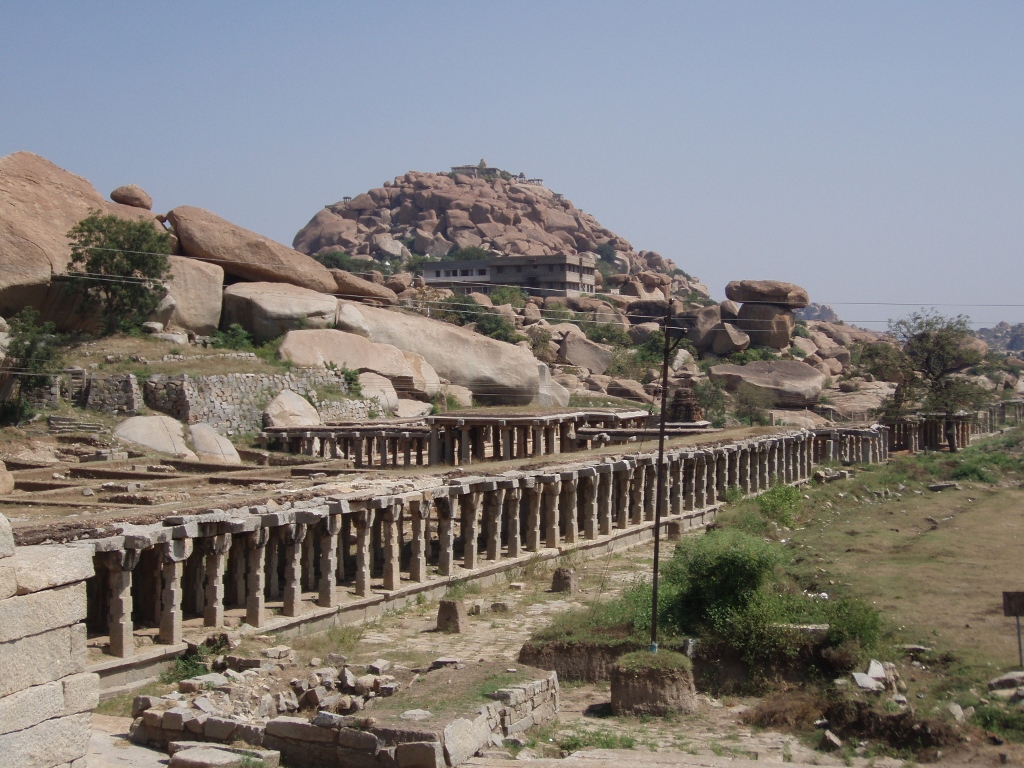 Remains of the Krishna Bazaar across Krishna Temple, while on the hill there is the Dada Gurudev Ashram
Remains of the Krishna Bazaar across Krishna Temple, while on the hill there is the Dada Gurudev Ashram
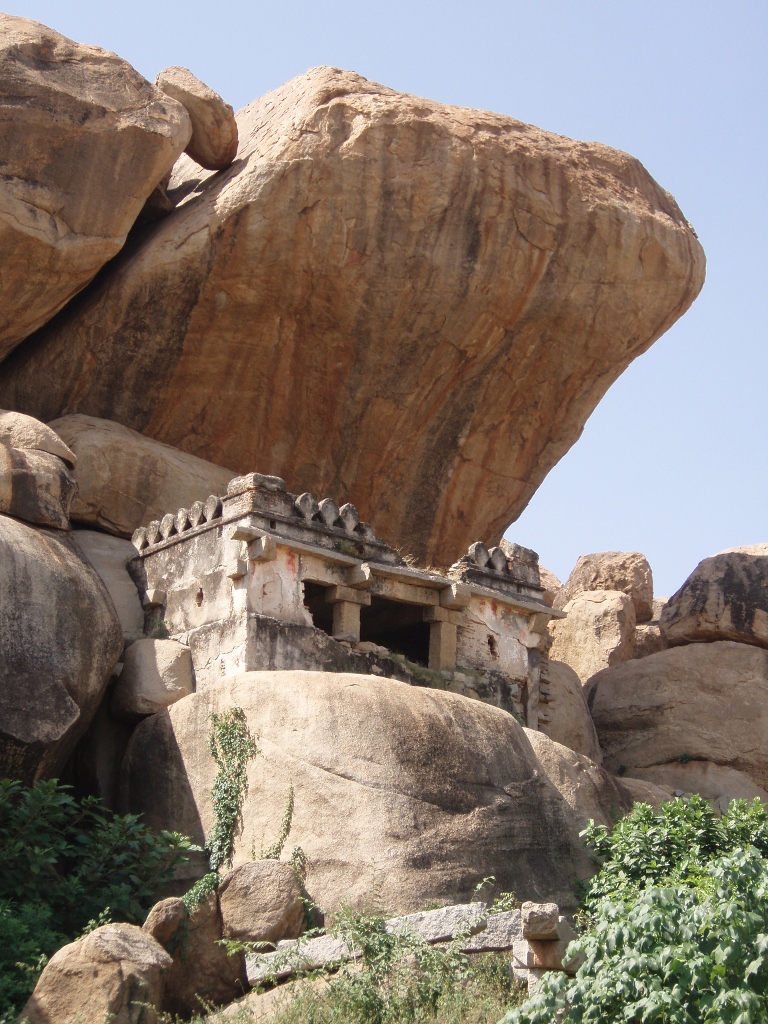 A detail from Hampi in the area around the temples dedicated to Ganesha
A detail from Hampi in the area around the temples dedicated to Ganesha
We first went to Kadalekalu Ganesha Temple. As its name suggests, there is a huge monolithic statue of Lord Ganesha, almost 5 metres tall. Ganesha is one of the best known and most frequently revered and celebrated deities in Hinduism. This is the god of the beginnings, protector of arts and sciences, letters and learning, and the god of intellect and wisdom. But, he also removes obstacles, this is the god of abundance, success, fortune and auspicious circumstances, he does favours and it is precisely because of all of this that he is so much venerated and so often seen not only in the temples, but also around the homes of the Indians who are Hindus.
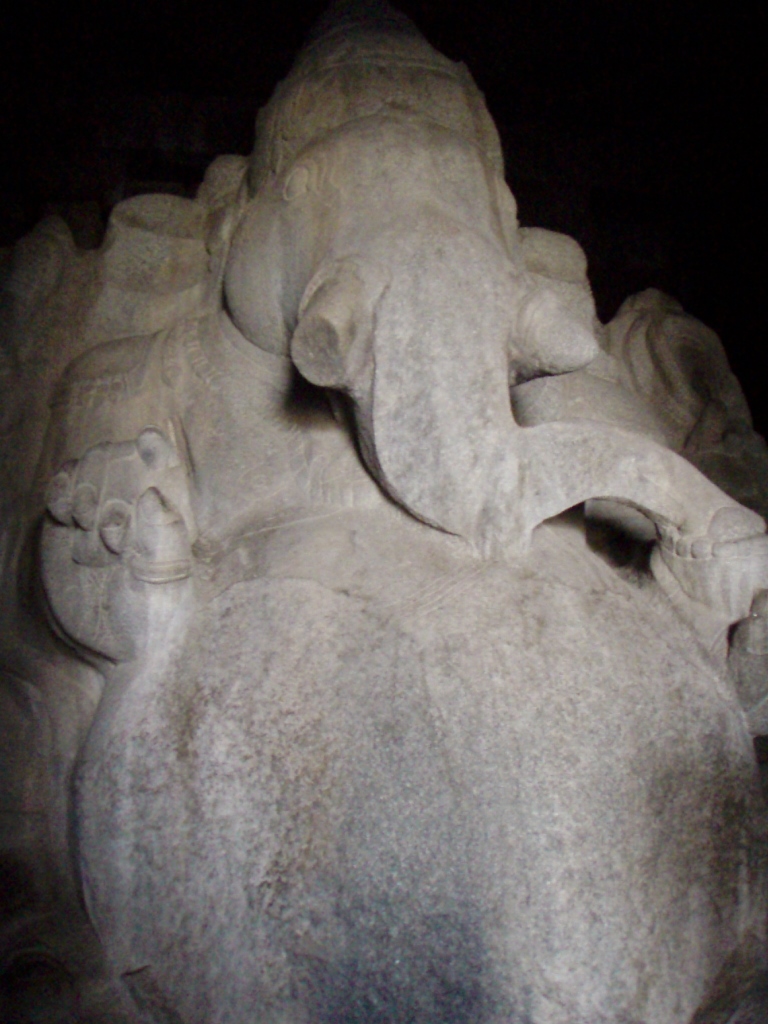 Monolithic statue of Lord Ganesha at Kadalekalu Ganesha Temple
Monolithic statue of Lord Ganesha at Kadalekalu Ganesha Temple
As for the iconography, although Ganesha may take up 32 different forms, what is always characteristic of him is that he has an elephant head and a big belly.
Ganesha is a son of god Shiva and goddess Parvati. The legend says that he was created by his mother who used clay to shape up the boy. At that time, Shiva was roaming around the world not having any clue what was going on at home. Once Parvati went to take bath and left her son to keep watch. As it happened, at that point Shiva unexpectedly and without any announcement returned home where he found a boy who kept claiming he was Parvati’s son, which drove Shiva crazy and then there was a huge fight and to cut the long story short, the boy was beheaded. This was right when Parvati had finished with her bath and when she saw what had happened she started to reproach Shiva for what he had done. Shiva repented and ordered his aides to bring him the first head they came across. This happened to be the head of an elephant and thus the boy became Ganesha as we know today. Apart from this being probably the first successful transplantation, I can only add that these gods are truly weird.
Be as it may, close to Kadalekalu Ganesha Temple there is also Sasivekalu Ganesha Temple. This temple is often called Small Ganesha, since the monolithic statue of Ganesha here is “only” 2.5 metres tall.
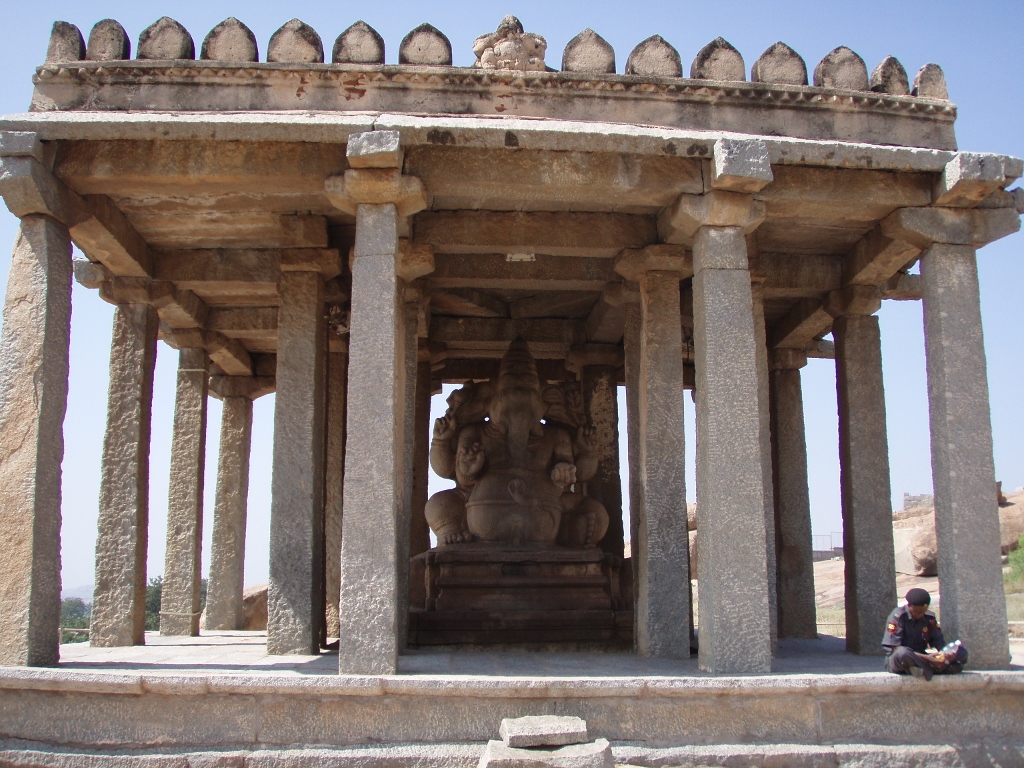
Sasivekalu Ganesha Temple
This temple was built in 1506 and the statue of Ganesha shows the god with four arms and in each one he is holding something: a sceptre, a part of his broken tusk, a sweet and a “pasha” which is a type of a supernatural weapon that is often translated as a noose. However, my favourite story about this is the one that explains the serpent coiled around Ganesha’s big belly.
Namely, it is no secret that Lord Ganesha loves to eat. Once he ate so much that his belly was just about to burst, so since there was no other way to keep his belly in one piece, Ganesha got a hold of a serpent and wrapped it around his belly lest this one exploded into pieces. There, this is the serpent you can see on Ganesha’s belly while he is sitting in the half lotus pose in the middle of the temple.
The next in our sightseeing schedule was Krishna Temple from 1513 which is no longer active today. Just like in the case of most of the bigger temples, the space around this temple complex is surrounded by walls and people enter through a gate above which there is a gopuram, with a note that in this case the gopuram is slightly damaged and therefore it has fewer levels.
In the middle, there is a central part of the temple and around the inner courtyard there are other smaller shrines, while along the walls there are numerous pillars. The temple is dedicated to Lord Belakrishna, which is actually the form of Krishna when he was an infant.
At the entrance into the central temple, above stone elephants that decorate the sides of a smaller staircase, there are mythical lions that are standing straight up on their hind legs. These are the yali, mythical animals that are sometimes shown in the shape of a lion and sometimes as a combination of other animals.
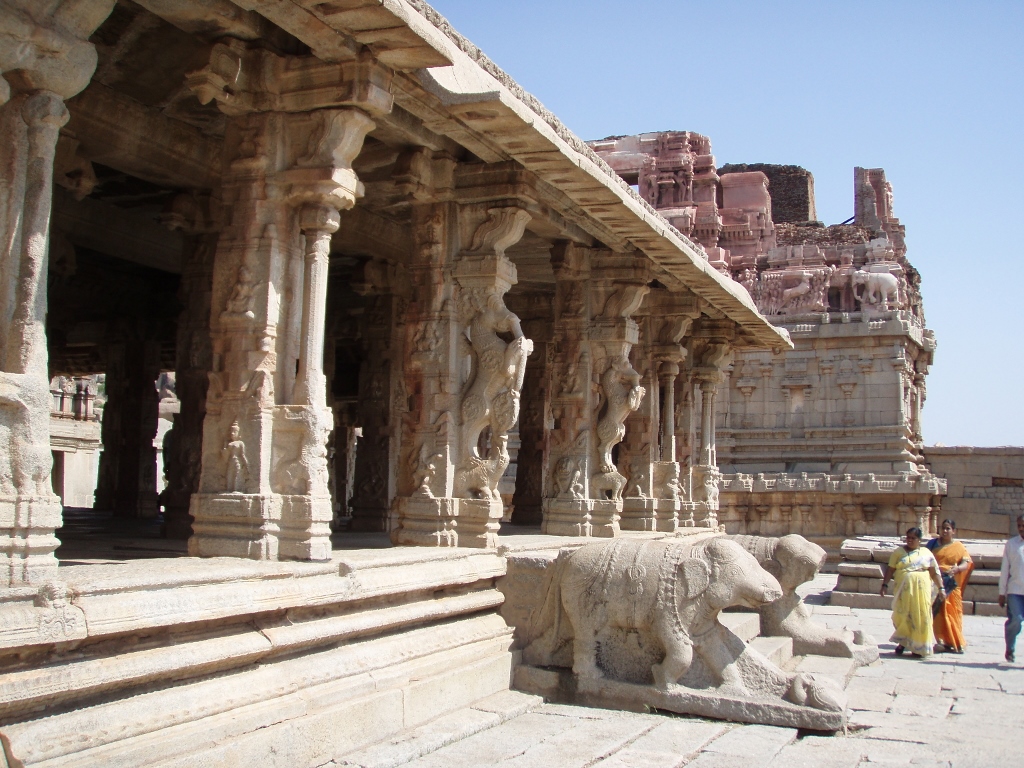 Entrance into the central temple with the sculptures of elephants and yalis that are a part of the pillars the staircase leads to (in the background there is the partially ruined gopuram)
Entrance into the central temple with the sculptures of elephants and yalis that are a part of the pillars the staircase leads to (in the background there is the partially ruined gopuram)
Not far from this temple, there is also Lakshmi Narasimha Temple from 1528. The temple is dedicated to Narasimha who is one of the ten avatars of god Vishnu and to goddess Lakshmi who is Narasimha’s consort. The most important part of this temple by far is the monolithic statue of Narasimha who is the fourth incarnation of Lord Vishnu – he has the head of a lion and the body of a man. This statue was chiselled out of a single piece of rock and it is the biggest in all of Hampi – it is 6.7 m tall.
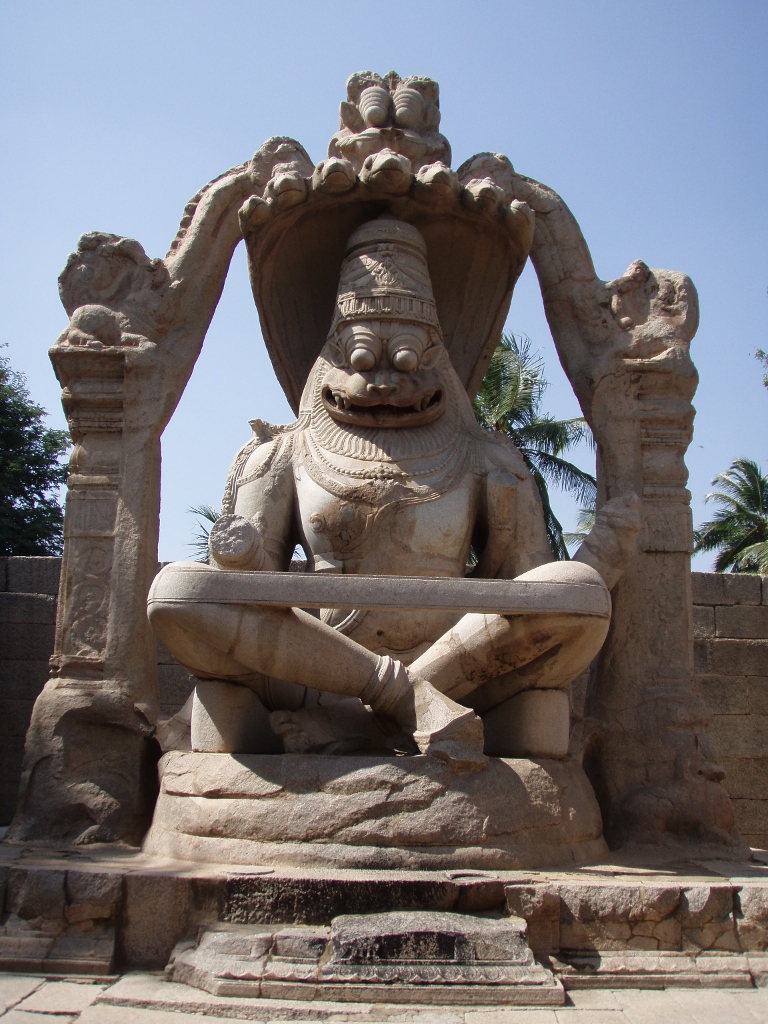 Monolithic statue of Narasimha within the Lakshmi Narasimha Temple
Monolithic statue of Narasimha within the Lakshmi Narasimha Temple
Regardless of some damages inflicted on this statue, it continues to be impressive with undiminished beauty. Originally, Narasimha’s consort Lakshmi used to sit on his lap, but in 1565 when the Mughals conquered the Vijayanagara Empire it was severed from Narasimha who was on the same occasion vandalised himself. Still, even today it is possible to see his lion’s mane and his bulging eyes and the jaws, while it is also important that he is sitting in the cross-legged position on coiled serpent Adishesha that was the king of all the snakes and that is here fanning out above Narasimha’s head with its own seven heads thus creating a nice canopy for the head of the god.
In the close proximity of this temple there is also Badavilinga Temple dedicated to Lord Shiva. The temple is very simple and small, and in its centre there is the largest lingam in Hampi. The whole structure which also includes the yoni, that symbolises goddess Shakti, is almost 3 metres tall, it is made of a single piece of rock and around it there is constantly water, which also bears its own symbolism and is linked to goddess Ganga.
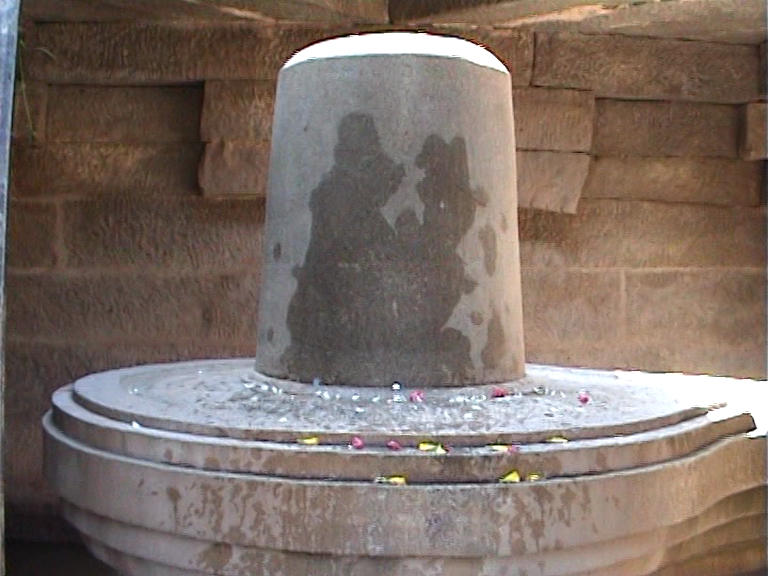 Shiva’s lingam on Shakti’s yoni
Shiva’s lingam on Shakti’s yoni
The next place we visited was Prasanna Virupaksha Temple also called the Underground Shiva Temple. The temple is not exactly underground, but rather dug-in and its roof is at the level of the surrounding ground. On the basis of the inscriptions found on it, this temple may be dated back to the 14th century. When we visited it, there was water in the temple, as if it were remains of some flood, so we could not access all of its parts.
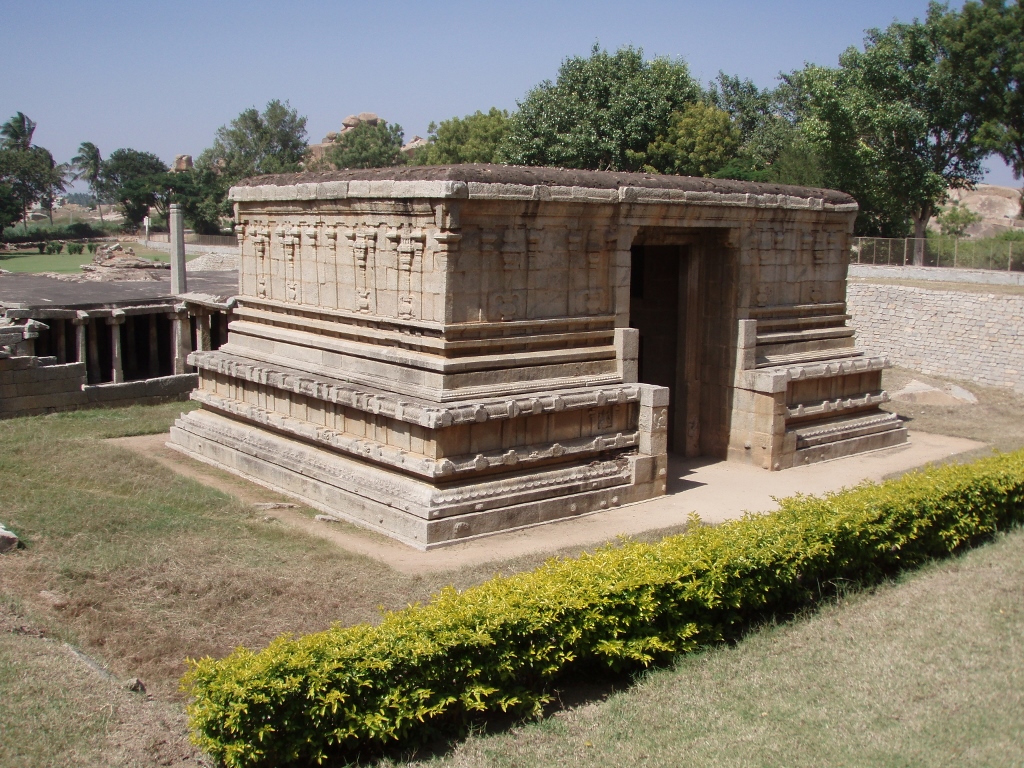 Prasanna Virupaksha Temple; the temple is actually to the left and it is dug-in, while the structure in the centre of the photo is used as an entry point to get to the temple
Prasanna Virupaksha Temple; the temple is actually to the left and it is dug-in, while the structure in the centre of the photo is used as an entry point to get to the temple
It is interesting that within the site we also saw remains of a mosque that is located there surrounded by Hindu buildings. This was in a way a nice introduction to the next place we visited, which is separated from the rest of the site by a wall, since in this area there used to be palaces in the past for the royal women. This enclosure is called Zenana. First we came across a stone platform on which there used to be the queen’s palace, but certainly the most beautiful building in this area is Lotus Mahal.
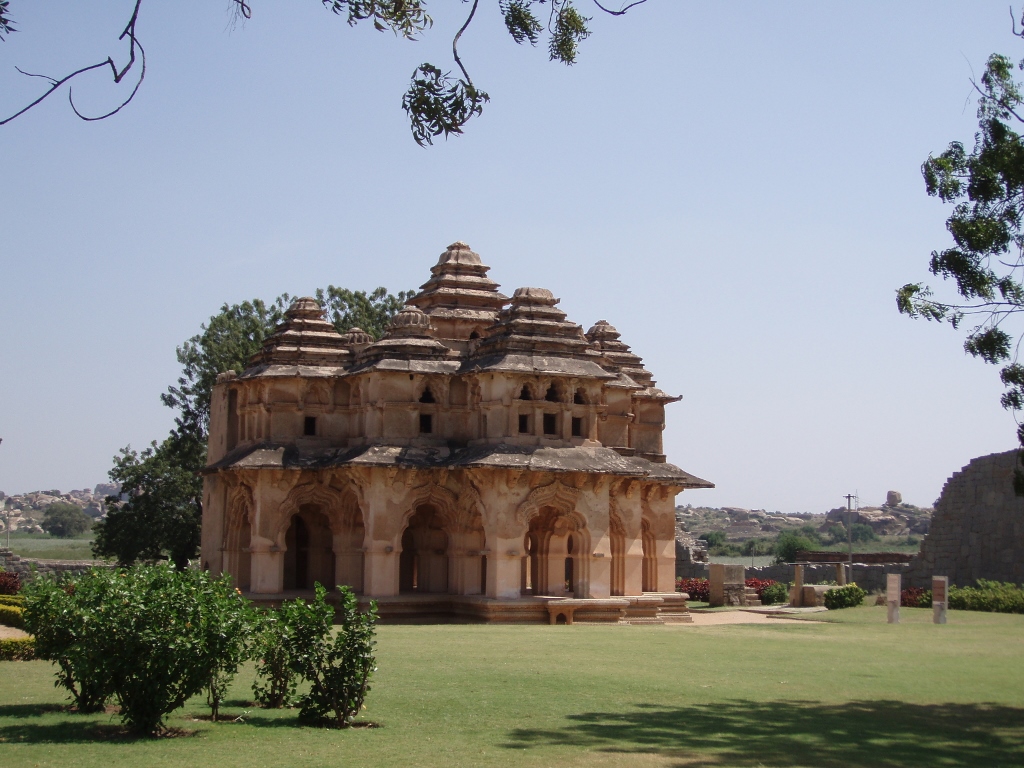 Lotus Mahal
Lotus Mahal
Lotus Mahal, an edifice from the 16th century, is thus called since with its shape it is reminiscent of a lotus flower. It is said somewhere that it was used by the queen for her to rest there or whatever and in some other places it is said that the king held councils with his ministers there. Again, as a supposition, it is presumed that in addition to the women only eunuchs were allowed to be within Zenana, so I’m not quite sure about this presumption that involves ministers too.
Be as it may, what makes Lotus Mahal important, in addition to its unquestionable delicate beauty, is its Indo-Islamic architecture. In this case, this style is reflected in the low stone platform that carries the structure above, which is typical of the Hindu architecture. The arches and the upper floor of Lotus Mahal are typically Islamic (although the arches have some relief decoration that is Hindu by its style), while the roof was again made in the Hindu manner.
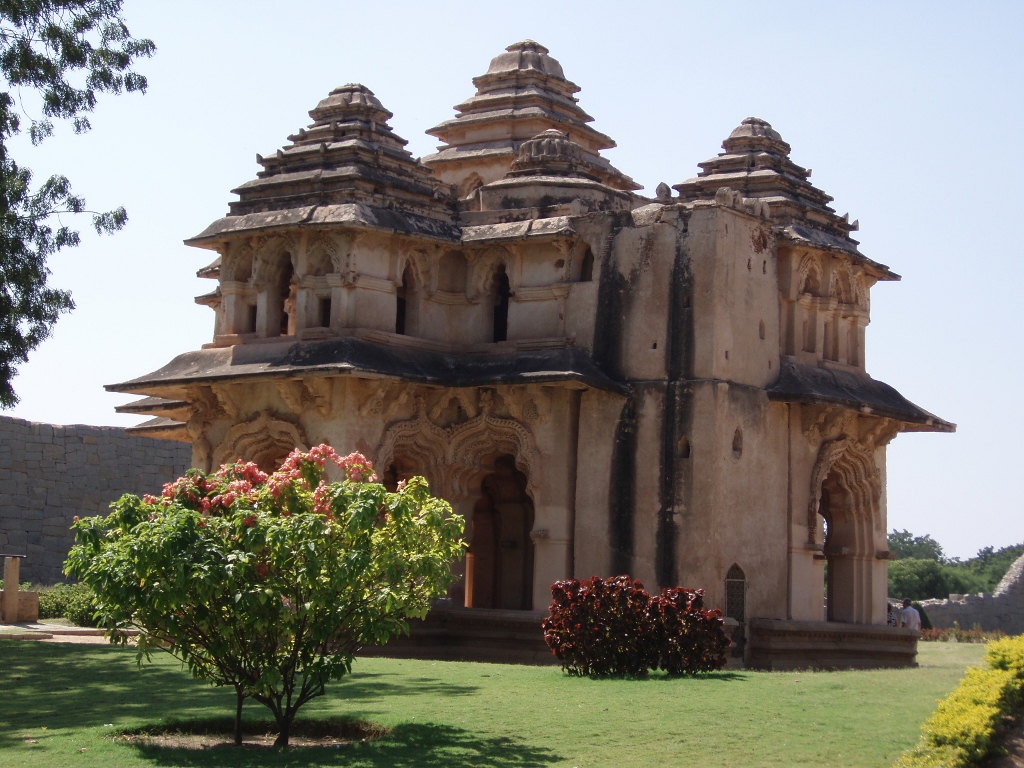 Lotus Mahal
Lotus Mahal
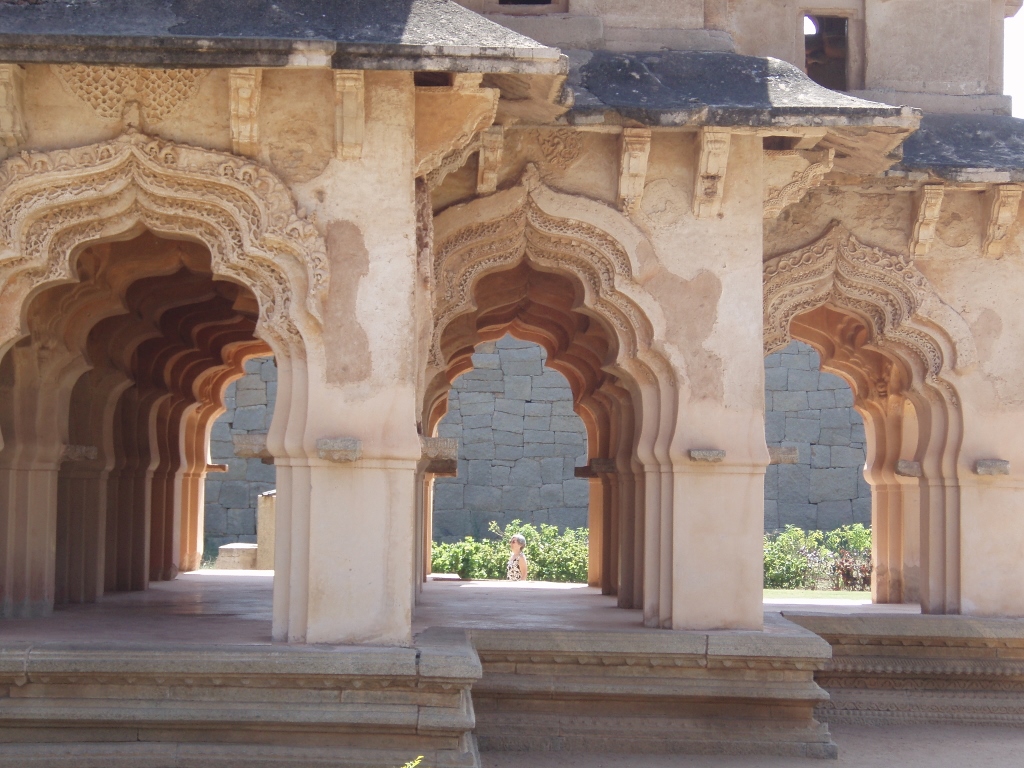 Lotus Mahal, a detail
Lotus Mahal, a detail
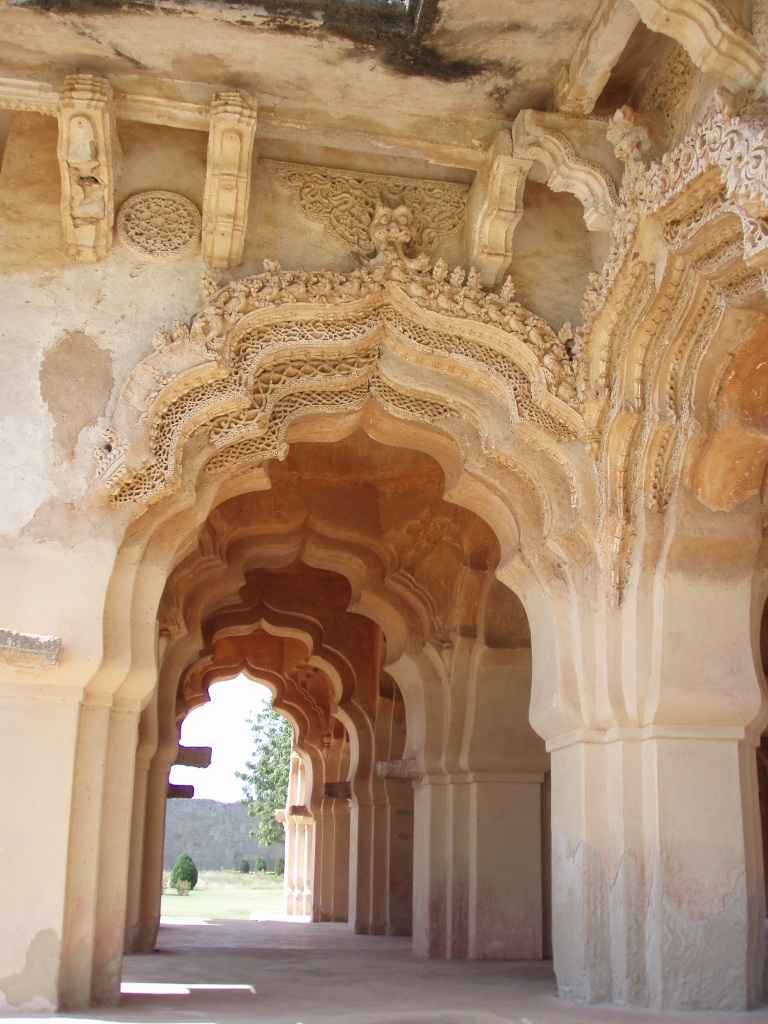 Lotus Mahal, a detail
Lotus Mahal, a detail
This space surrounded by the high wall was seriously well guarded. This is testified to by the tall structures that were used as observation towers.
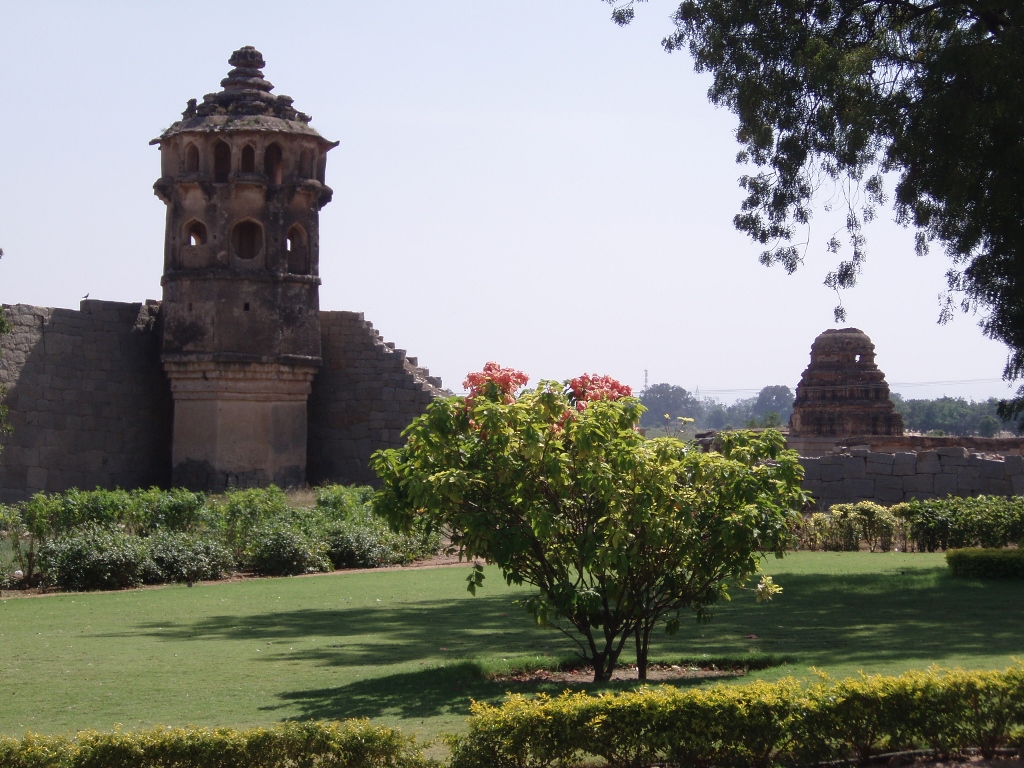 One of the observation towers and the walls of Zenana enclosure
One of the observation towers and the walls of Zenana enclosure
Right next to the walled-in Zenana enclosure, there are elephant stables. They were also built in the Indo-Islamic style and they could accommodate 22 elephants, since each of the 11 rooms is sufficiently big for two.
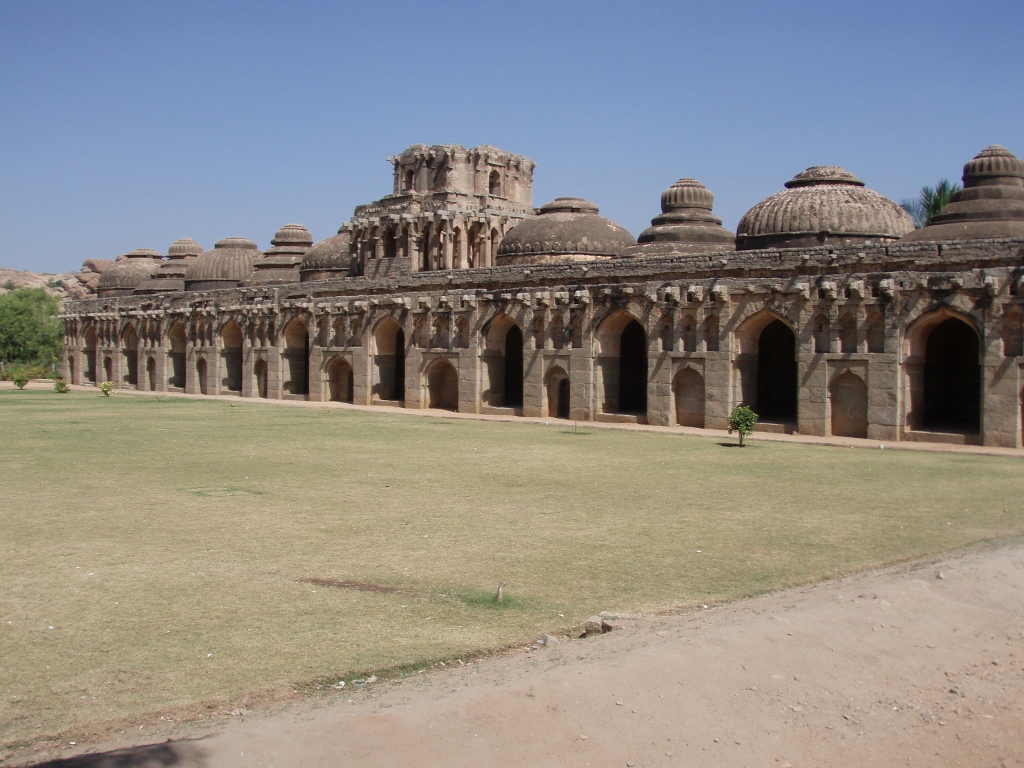 Elephant stables
Elephant stables
Following the visit to the secular structures, we returned again to the sightseeing of the religious ones and the next on the list was Hazara Rama Temple.
The temple is interesting since it is dedicated to Lord Rama, one of the Hindu deities. The name itself means “A Thousand Ramas,” because “Hazara” means a thousand, while Rama is a character from the epic called Ramayana. Both on the outside- and the inside-facing walls of the temple complex there are relief depictions of “a thousand” figures (admittedly we did not count them, but this is what is said) and they actually show the ceremonies linked to the celebration of the Mahanavami festival, as well as episodes from Ramayana carved in the stone. Also, along the edge of the roof above the central shrine there are numerous small statutes of human figures.
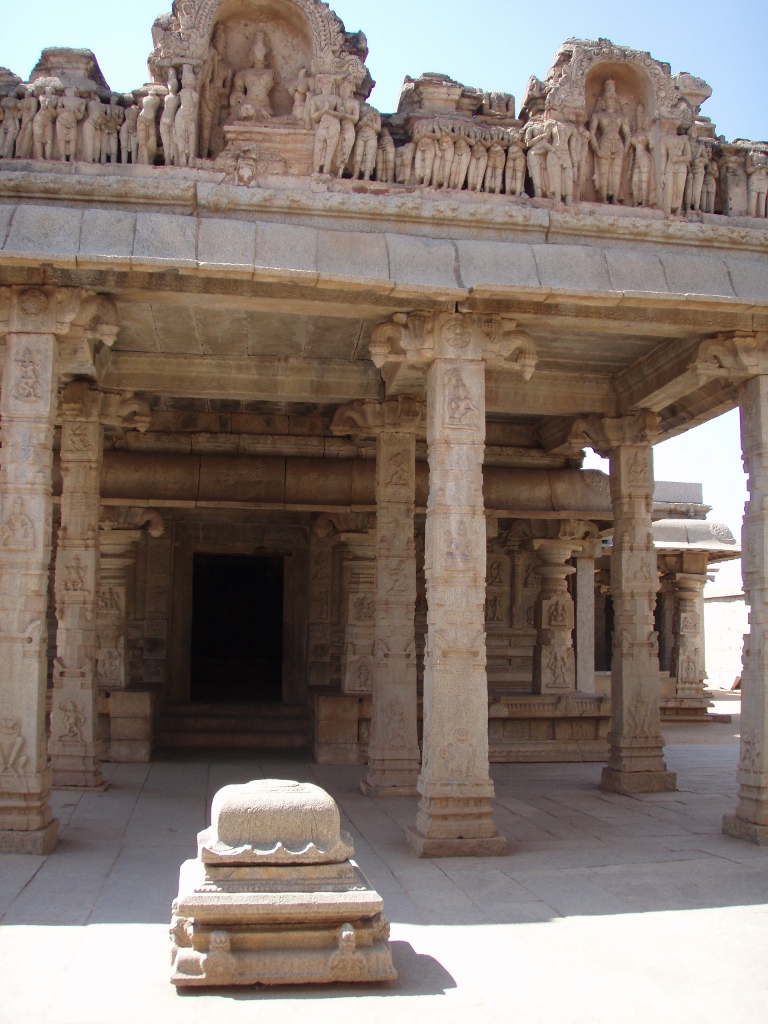 Entrance into the central shrine at Hazara Rama Temple
Entrance into the central shrine at Hazara Rama Temple
I found it interesting that inside we saw some pillars made of two different types of stone. We did not see this in any other temple within the Hampi site.
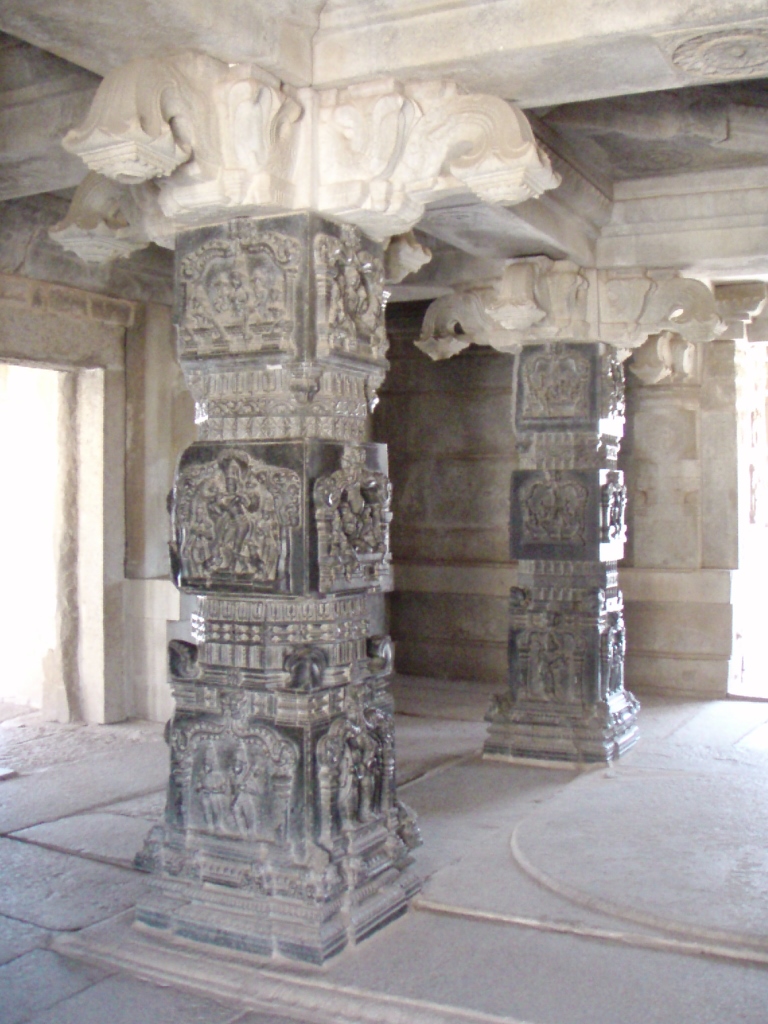 Pillars in the shrine made of two different types of stone
Pillars in the shrine made of two different types of stone
But here, like in some other temples, we came across water spouts in the shape of elephant’s head and trunk. The only difference is that these here were, in my opinion, the prettiest.
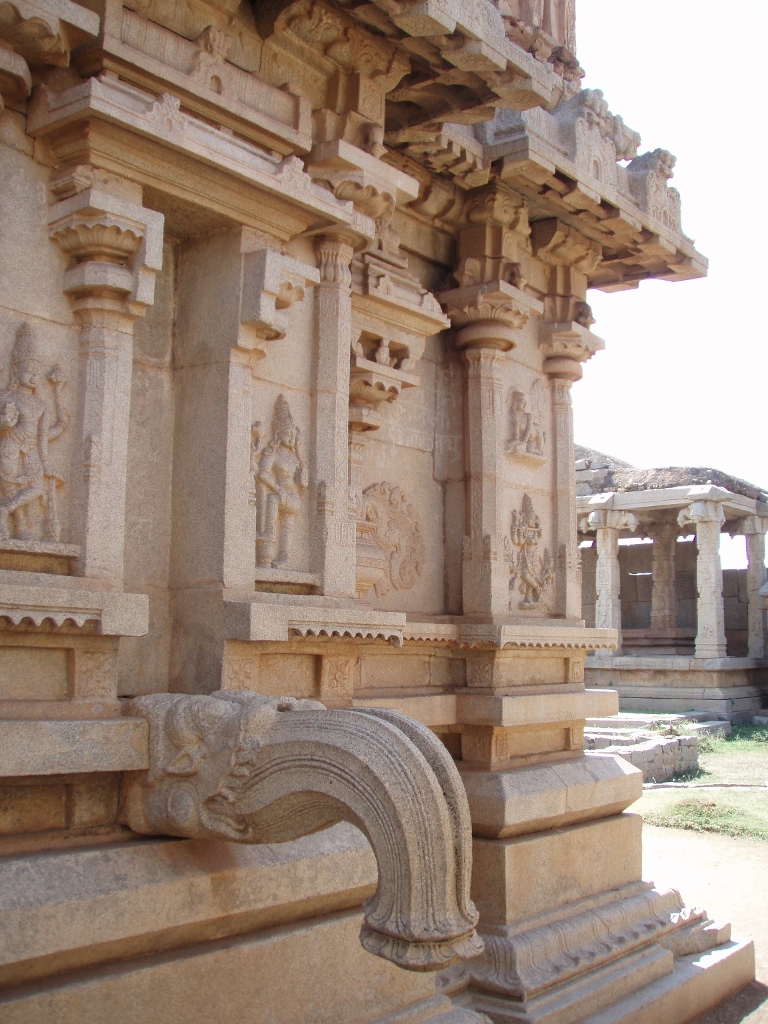 Water spout in the shape of elephant’s head and trunk
Water spout in the shape of elephant’s head and trunk
Hazara Rama Temple is not big, but it is very nicely and opulently decorated.
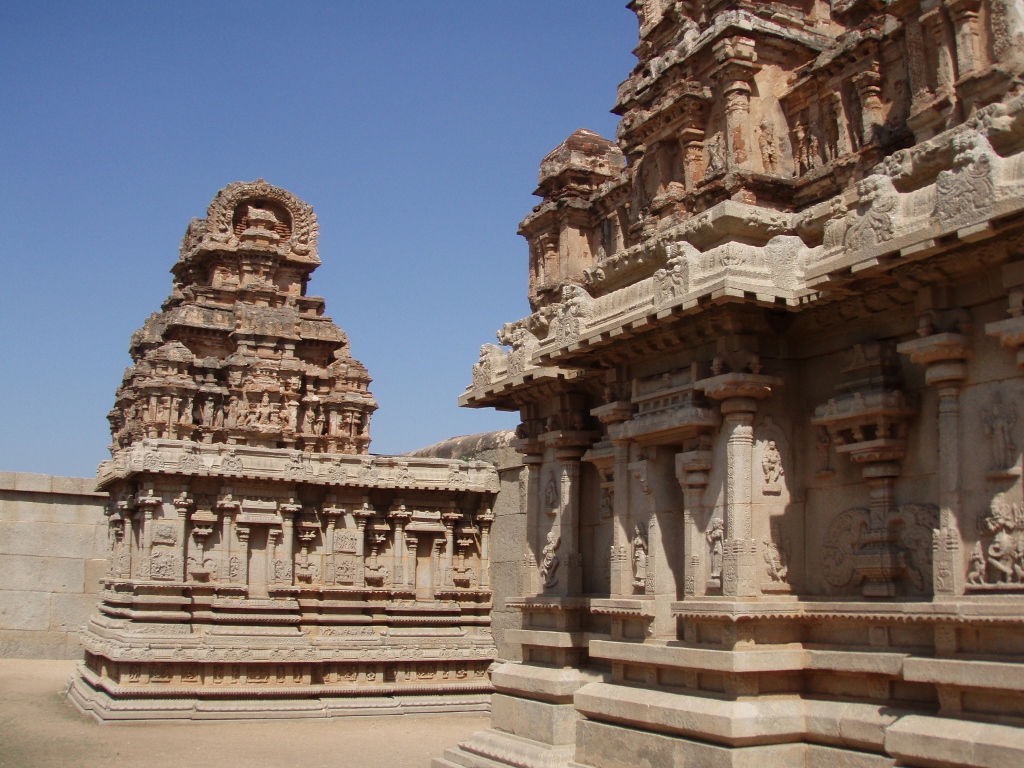 Parts of the temple seen from the inner courtyard
Parts of the temple seen from the inner courtyard
Then we went again to another separated secular complex called the Royal Enclosure. There we first came across a low stone platform the staircase of which was guarded by two stone elephants, but as for the rest of the structure, there was nothing else left. In the vicinity, however, there is the Stepped Tank.
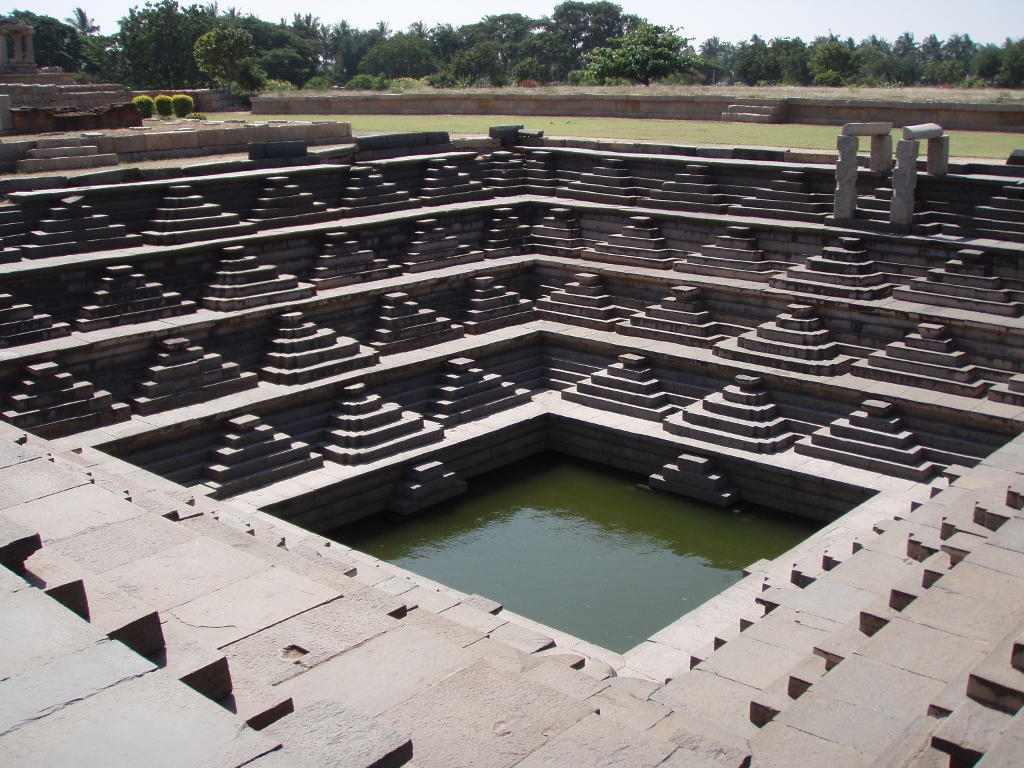 Stepped Tank
Stepped Tank
That Stepped Tank seemed utterly amazing. Well, perhaps not that amazing now, but the very thought of what it must have looked like when cascading water was flowing down the sides of the tank was mind-boggling. Even today it is possible to see how the water was transported to the tank. This system involves a stone aqueduct that distributed water throughout this Royal Enclosure and one branch of the aqueduct went to the Stepped Tank.
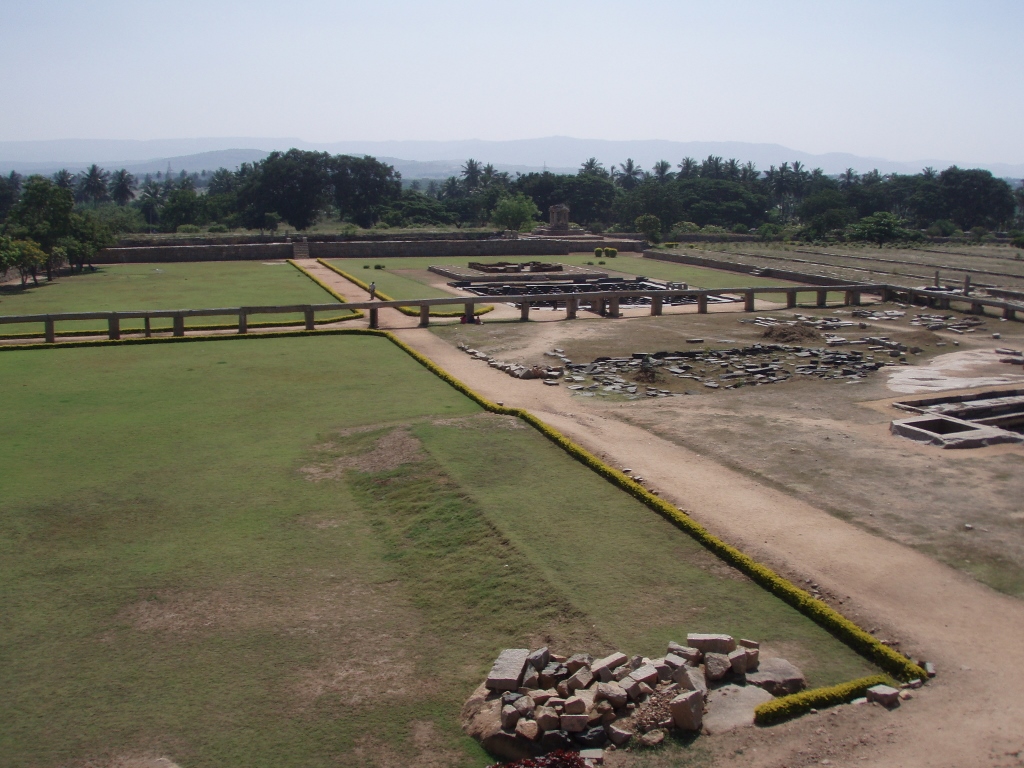 Royal Enclosure and the aqueduct
Royal Enclosure and the aqueduct
The entire time I was admiring all of this thinking how stunning it must have been when Hampi, or rather the Vijayanagara Empire, reached its point of culmination.